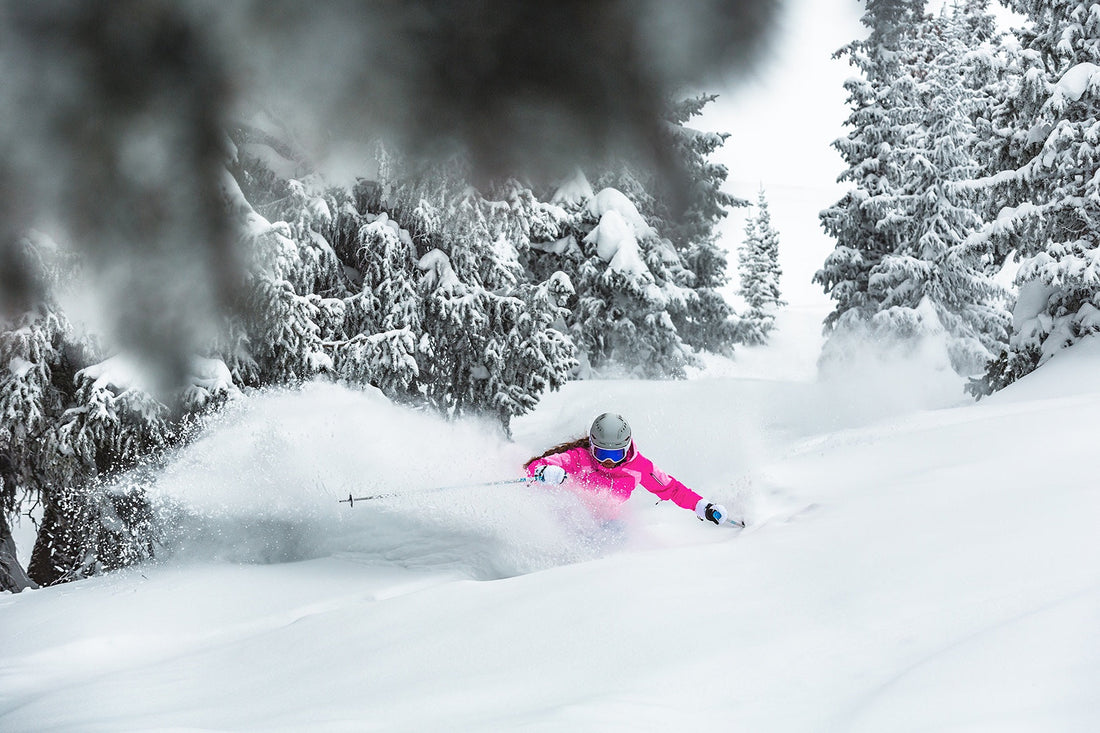
Our Top Pointers For Skiing Powder
Share
Everyone has a powder skiing fish tale about chest deep powder and seemingly endless 'free refills'. The best skiers talk ceaselessly about their most epic ski days as being 'bottomless pow', and 'face shots' on every turn. But the technique required for skiing after the biggest storms can differ significantly from the way we are taught to ski groomers and moguls. Here are our 5 pointers for keeping your tips up and enjoying the deepest days to the fullest!
Step 1: A Wider Ski.
Spyder Big Mountain Skiers Owen Leeper, Julian Carr, and Lorraine Huber all suggest that the first step to staying afloat in the pow is skiing a wider ski. "Rent a freeride ski of around 100mm width, and with rocker in the tip", says Huber (who is also a level 3 certified ski instructor and guide). Due to the wider width, these skis disperse your weight more evenly across the top of the snow, which will help prevent you from sinking compared to your traditional alpine ski.

Step 2: Stay Forward.
When skiing powder, the default reaction in order to keep one's tips up tends to be falling into the 'backseat'. "You may have to lean slightly further back than if you were skiing a groomer, but you don't want to get backseat or you will lose control" says Owen Leeper. Leeper, who skis powder for a living advises to "try and keep your shoulders over your toes."

Step 3: Create Rebound.
Momentum is your friend in the pow. Unlike on your favorite groomer, where you would be relying on your edges to help initiate and follow through with a turn, powder skiing is a "surfier" action. Lorraine Huber points to the "porpoising" action of powder skiing as worthy of practicing on the first run or two to get a sense for the kind of magical rebound that occurs by pushing down on both skis and rebounding from the compacted snow beneath you. "Repeat this in both directions", says Huber. "It should feel like a bouncing movement with both skis coming up and down together".

Step 4: No Carving Necessary.
Traditional carving turns, as you would perform on hardpack, don't translate to powder since there isn't a hard surface for your skis to edge into. Rather, use the porpoising technique (see step 3) in order to initiate big, sweeping turns on top of the snow. By compacting the snow just before initiating the turn, your skis will rebound to the top of the snow. Once they bounce back up to the top, don't be afraid to point those tips downhill, gather some more momentum, and then lay into your next weightless turn.

Step 5: Float Weightlessly.
Step 6: Keep Doing Your Snow Dance.
Some resorts have been a bit luckier than others this season (looking at you Jackson Hole and Mt. Baker). Keep those snow dances coming and thank ULLR on a daily basis so we can get those days to practice these new found techniques.